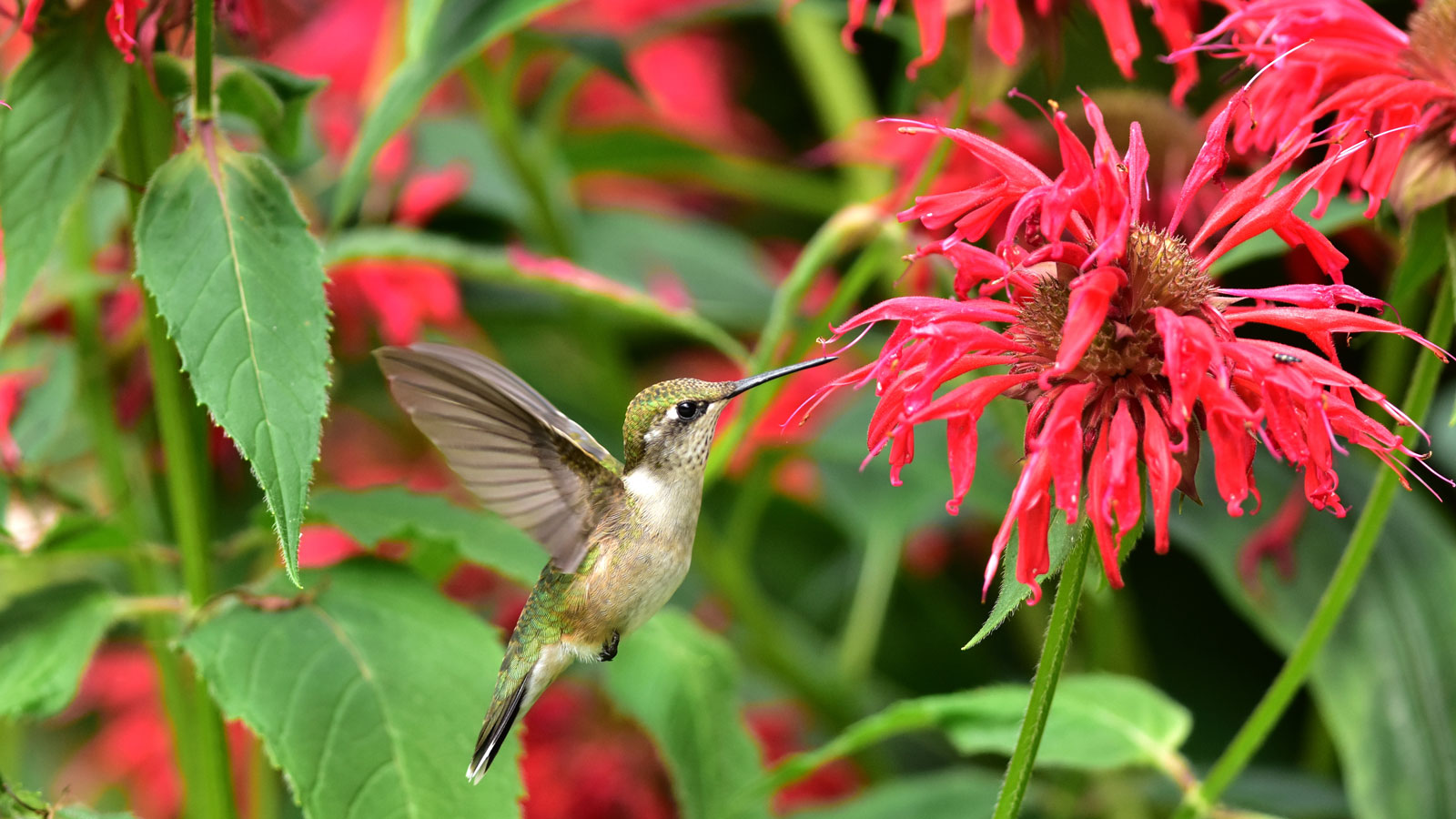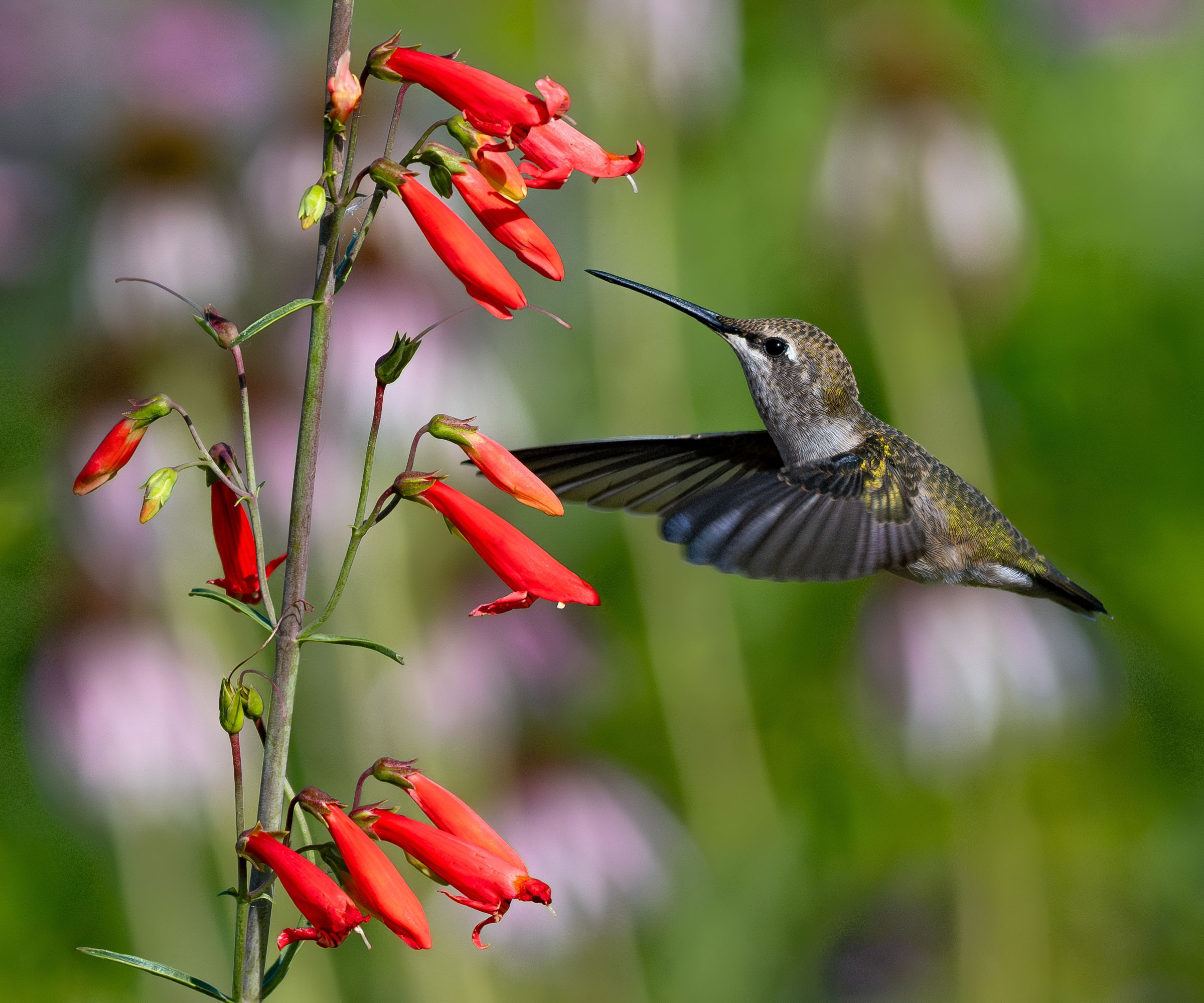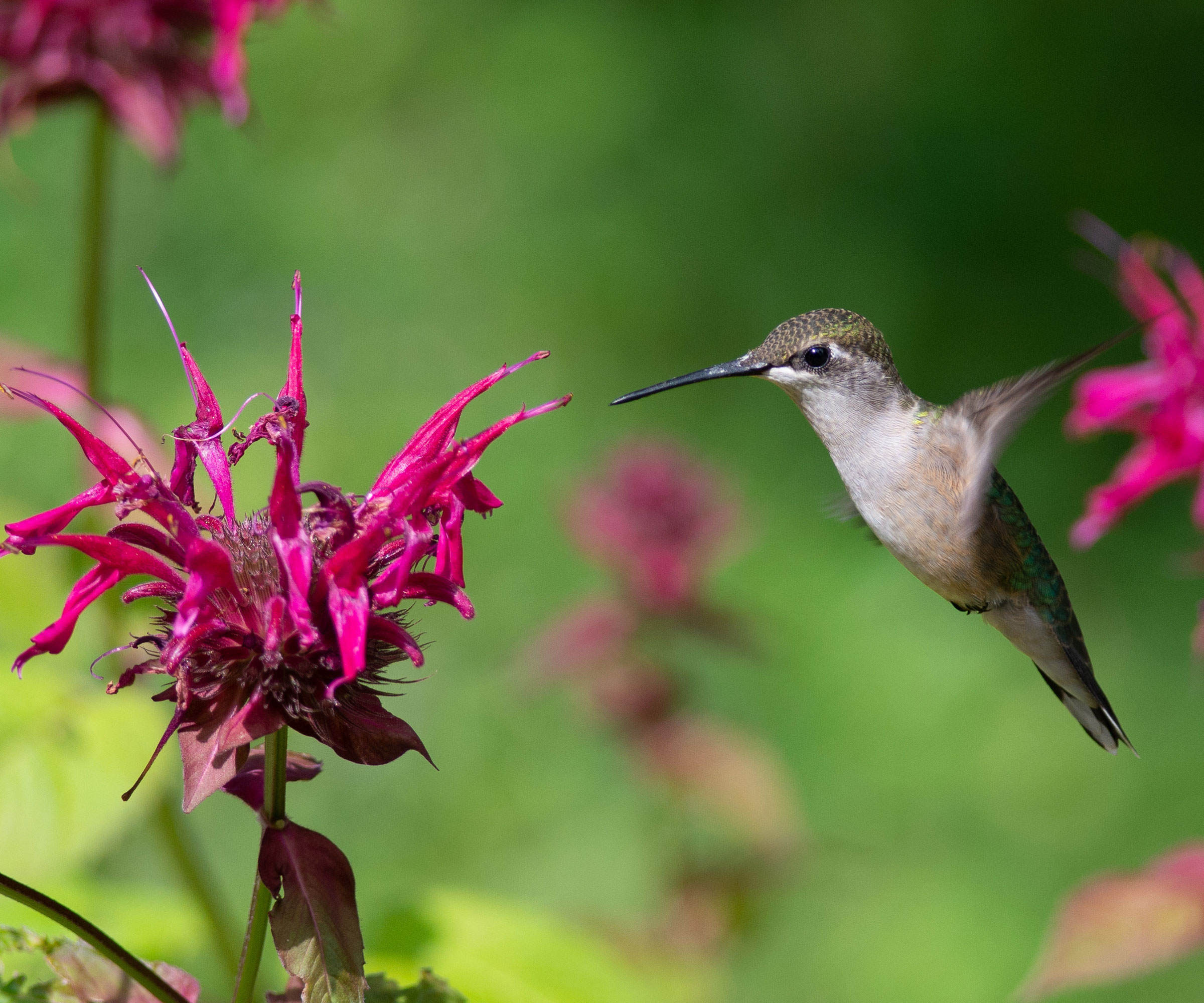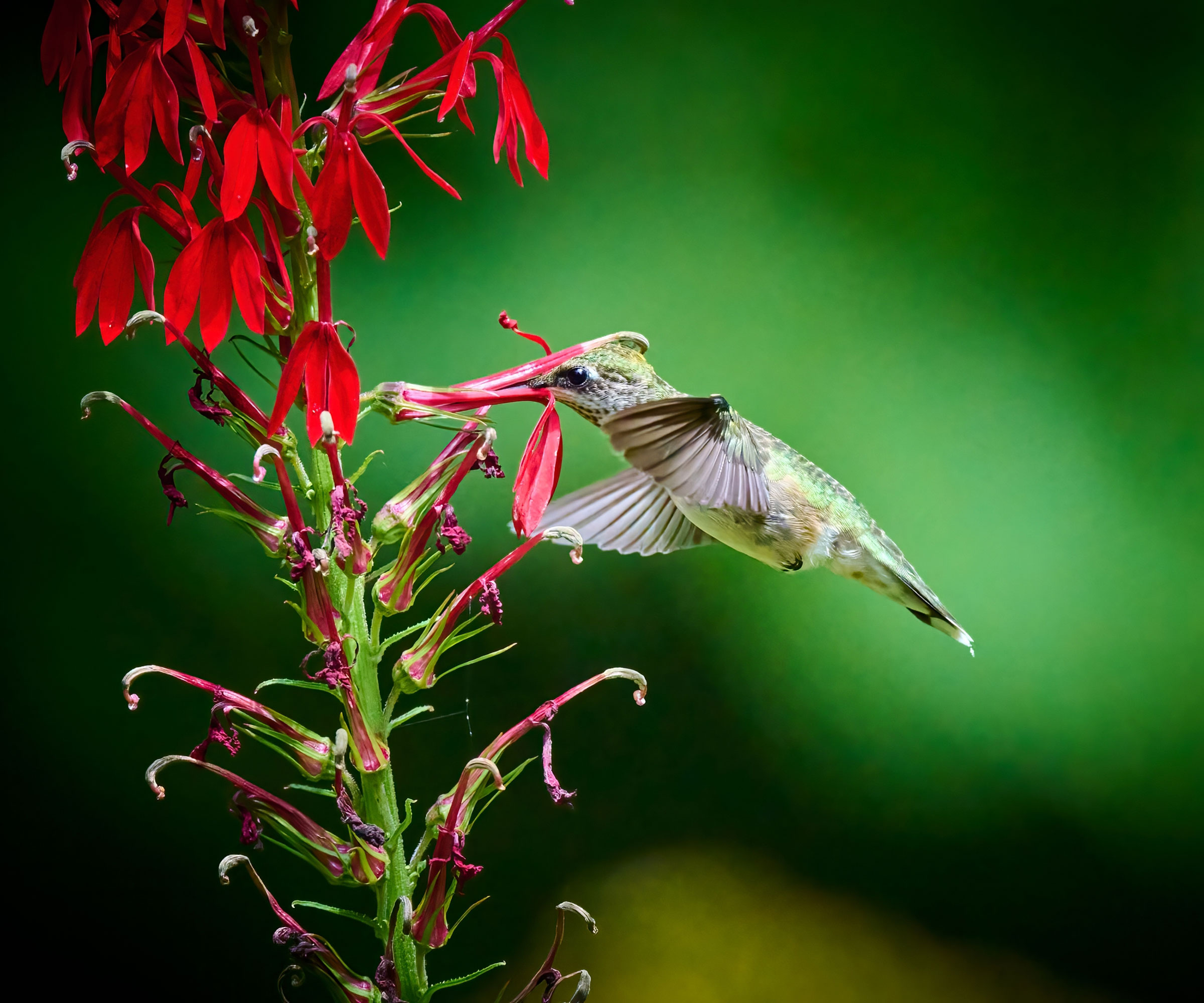Don’t Deadhead These 3 Plants If You Want To Help Migrating Hummingbirds In Late Summer
If you want to nourish and sustain migrating hummingbirds in late summer and fall, don’t deadhead these 3 plants – help to provide a special food source for hummers in transit


Amy Draiss
For many gardeners, summer is as much about the pleasure of catching a glimpse of a hummingbird as it is soaking up the sights or smells of individual plants. And if you’re lucky enough to be living within range of migrating hummingbirds, late summer affords a unique opportunity to attract these delightful creatures and nurture them on their long journeys with a little nectar treat from select perennials you might be growing.
Towards the tail end of summer, though, things can be looking a bit straggly and unkempt in garden beds and borders, and you may be tempted to reach for the snippers. While there are some perennials that benefit from a late summer chop, there are a handful of flowers that still offer a vital nectar source for hummingbirds – even if the flowers themselves seem a little past their best.
You may think they are on the way out, but they still contain a timely drink for thirsty hummers. Here are a few key ornamentals you shouldn’t deadhead yet, even if they do look a little brown and weary here and there. They might not win any awards for beauty, but they are still providing a vital service for our most elusive and delightful garden guests.
Plants To Leave To Feed Migrating Hummingbirds
For key hummingbird species making their monumental journey south in late summer and fall, any chance to grab some nourishment en route will be readily snatched up. Making sure your garden has a few desirable options in place will massively increase your chances of enticing thirsty travelers to your patch. So don’t just deadhead each and every one. A faded bloom could still make a vital hummingbird migration aid.
If your perennials have hummer-friendly tubular flowers containing a supply of yummy nectar, they aren’t going to mind so much if the odd petal looks a bit weather-beaten. What matters is that they can still drink their fill in comfort – so focus on this rather than the overall artistry of your hummingbird favorites. Even faded flowers will still be nourishing to migrating rufous, ruby-throated and black-chinned hummingbirds, many of which are covering distances of several thousands of miles.
When the distances are so long, the drinking containers become less important than the drinks they contain. So don’t worry too much about leaving the odd brown flower in your perennial border. If they have some value to a nectar-loving passer-by, they are worth their weight in gold. And if you’re lucky, you’ll be rewarded with a glimpse of one of nature’s most extraordinary late summer fly-by spectacles.
1. Beardtongue (Penstemon)

Gorgeous beardtongues (penstemons) are a vital nectar source for hummingbirds, and many are often blooming well into late summer, depending on region and variety. If you cut your stalks back in early summer after the first flowering, you will hopefully be enjoying a second flush in the latter stages of the season.
But even if you suspect these summer blooms are drawing to a close, and even if there is a little bit of fading and discoloration here and there, it’s still worth keeping the flowerheads in tact. This is especially true while there is a chance that migratory hummingbirds will be flitting past on their search for nectar stop-offs.
It only takes a good watering and a couple of sunny days, and you might find a few extra flowers spring into life, even at the far reaches of summer, to coincide with the hummingbird migration path. Think about it, a little bit of nectar is all a passing hummingbird needs, with its fast metabolism and agile drinking style. The penstemon’s flower shape will serve as a pretty drinking receptacle for a hummer, even if the colors are fading here and there elsewhere on the plant.
A hot favorite for hummers is vivid orangey red Firecracker (P. eatonii). Still, hummers are after fast food, so they aren’t going to turn their beaks away from non-red penstemons. Pretty pink Parry’s Beardtongue (P. parryi) is popular with migratory Rufous hummers.
You’re in luck if you have any coral, hot pink or even purple-pink flowering beardtongues in your garden, at any stage. If you’re looking to build out your native flowering plants for next year, try the Penstemon ‘Seedville 100 Sensation’ seeds from Walmart for two-tone pink, red and purple blooms.
2. Monarda

While monarda is obviously associated heavily with bees, hummingbird migrations will certainly have their interest piqued by any flowering specimens in your yard. Even if your bee balm varieties are starting to look a little rough around the edges, it’s still worth keeping the flowerheads of these long-lasting perennials in situ for a few more weeks.
Red varieties are notably alluring, such as ‘Raspberry Wine’ and ‘Gardenview Scarlet’ – but there are many pink and purple options that will also shine like a beacon to a passing hummingbird. ‘Balmy Purple’ and ‘Leading Lady Pink’ are highly desirable to thirsty travelers. Bee balm is one of the most compelling flowers in terms of nectar supply.
Each flowerhead comes with a veritable explosion of individual nectar cups. So even if a few are fading, that doesn’t mean they are devoid of sweet hummer treats. There is sure to be some nectar stashed away in parts of each floral firework for passing hummers to enjoy. Ruby-throated hummers are particularly taken by the bee balm’s charms.
If you want to max out your bee balm beauty for hummers and other pollinators, there’s still time to add a few plants into the mix. You can buy Monarda ‘Leading Lady Plum’ plants from Burpee for joyous cerise-purple, frothy firework-style flowerheads.
3. Cardinal Flower

This is absolutely in the ‘last but not least’ column of essential flowers you need to keep sacrosanct for that late-summer and fall phase when hummingbirds migrate. The stellar charms of the dynamic cardinal flower (Lobelia cardinalis) cannot be overstated. Its arresting scarlet displays are often still in full swing as late as September. Even if the odd flower has turned up its toes, a few cardinal flowers are all you need with hummingbirds migrating nearby.
While certain flowering hummingbird specialities demand prime real estate in a garden, with full sun and well draining soil, cardinal flowers can thrive in less-than-ideal growing conditions. If you’re hoping to catch the eye of a migrating hummer in a partially shaded spot, a red cardinal flower is your ticket to the nectar show – even if individual flowers at the base of each stalk might be slightly past their prime. Happy in shade, you can even aspire to a late-season hummingbird flurry if you are growing the blue cardinal (great blue lobelia) variety.
If you’re tempted to splash some red cardinal blooms into the mix in order to entice your hummers back for more, you can grab live plants of scarlet Sacred Roots Nursery Cardinal Flower from Walmart if you hurry.
Interested in more ideas for pollinator-friendly gardening and expert advice delivered straight to your inbox? Sign up for the free Gardening Know How Newsletter!
This article features products available from third party vendors on the Gardening Know How Shop. Keep in mind that our plant inventory is limited - so if you’re thinking of purchasing, don’t wait!
Sign up for the Gardening Know How newsletter today and receive a free copy of our e-book "How to Grow Delicious Tomatoes".

Janey is a former assistant editor of the UK’s oldest gardening magazine, Amateur Gardening, where she worked for five years. For the last few years, she has also been writing and editing content for digital gardening brands GardeningEtc and Homes & Gardens. She’s taken part in a range of conservation and rewilding projects for the Royal Horticultural Society (RHS) and the British Trust for Conservation Volunteers (BTCV) as a way of exploring her horticultural horizons. She is currently undertaking her RHS Level 2 certificate in The Principles of Plant Growth and Development.
- Amy DraissDigital Community Manager

